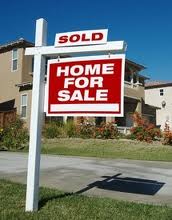The housing recovery is expected to grow at an annualized rate 0.6 percent through the third quarter of this year, then gain momentum and prices are projected to grow 3.7 percent between the third quarters of 2013 and 2014
 The housing recovery is expected to grow at an annualized rate 0.6 percent through the third quarter of this year, then gain momentum and prices are projected to grow 3.7 percent between the third quarters of 2013 and 2014 until settling down to 3.3 percent annual increases over the next three years according to Fiserv, a financial services technology provider using data from the Federal Housing Finance Agency (FHFA).
The housing recovery is expected to grow at an annualized rate 0.6 percent through the third quarter of this year, then gain momentum and prices are projected to grow 3.7 percent between the third quarters of 2013 and 2014 until settling down to 3.3 percent annual increases over the next three years according to Fiserv, a financial services technology provider using data from the Federal Housing Finance Agency (FHFA).
Both home prices and home sales volumes increased steadily last year, making 2012 the first positive year for both prices and sales since the housing market crash, excluding gains induced by the home buyer tax credits in 2009 and 2010.
“Although some recent real estate activity has been speculative, it seems as if buyers have more realistic expectations about housing market returns after having lived through the largest housing market crash in U.S. history”
“Two years ago, 2012, was the first year since 1997 that the housing market has resembled something recognizable as normal. For the past 15 years, home price changes and sales volumes have either been boosted by a bubble mentality or crushed by crash psychology,” said David Stiff, chief economist, Fiserv. “Back in 1997, housing prices grew 3 percent, just below the 5 percent long-term average rate of appreciation. From 1998 to 2006, prices appreciated at levels above 5 percent, with double-digit price increases in many of those years. Then, after 2006, the market collapsed as euphoria turned to panic. It took until the end of 2011 before housing markets finally started to stabilize. The latest Case-Shiller results show a return to a historically normal pace of price appreciation in the last year.”
The recovery in home prices has been solid and broad-based. At the end of the 2012 third quarter, prices were rising in approximately 62 percent of all U.S. metro areas, compared to 12.5 percent in the same period a year ago. Average U.S. home prices increased 3.6 percent from the third quarter of 2011 to the comparable period of 2012. Many of the metro areas that suffered the most severe declines during the housing market crash enjoyed the highest price increases in that period.
Fiserv Case-Shiller projects that by the end of 2013, home prices will be rising in nearly every metro area in the U.S. Some markets may experience short-term double-digit price jumps that could be partially reversed by price declines as large tranches of bank-owned inventory (REO) are liquidated. In other markets, price appreciation will slowly return to normal rates as home buyers regain confidence that the market has found its footing.
Stiff cautioned that the parallels to previous years should not be overstated. Unlike in 1997, there are millions of homes with delinquent mortgages, in the foreclosure process, or in REO inventories listed for sale or waiting to be sold. But many trends are positive. With both prices and mortgage payments at historic lows relative to income, Fiserv Case-Shiller expects stronger demand for housing, and the sector once again having a positive impact on the economy.



